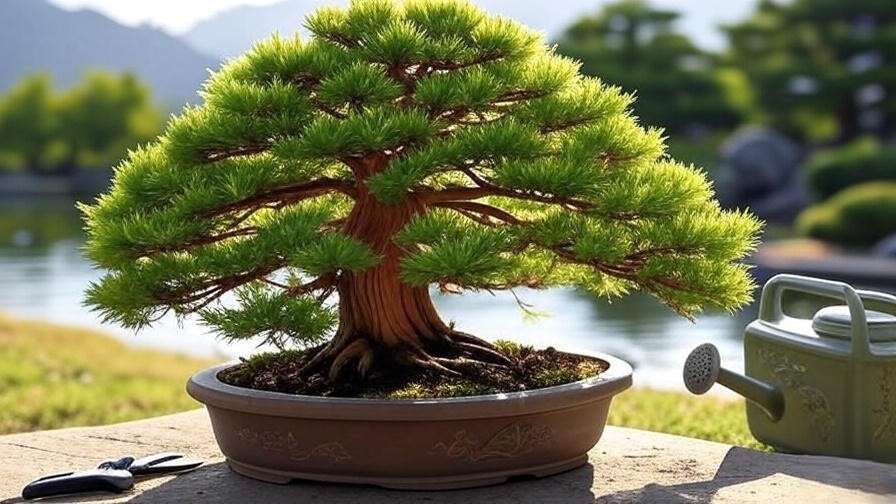Imagine a miniature tree, its soft, emerald-green foliage swaying gently in your living room, bringing a slice of Japanese serenity to your home. The hinoki cypress bonsai tree, with its delicate scale-like leaves and elegant form, is more than just a plant—it’s a living work of art. Whether you’re a beginner dipping your toes into the world of bonsai or an enthusiast seeking a new challenge, this guide will help you cultivate a thriving hinoki cypress bonsai tree. As a plant care specialist with over a decade of experience in bonsai cultivation, I’ve partnered with professional growers to bring you a comprehensive, beginner-friendly roadmap to success. From watering to pruning, we’ll cover everything you need to nurture this stunning evergreen. Ready to embark on a rewarding bonsai journey? Let’s dive in! 😊
1. Understanding the Hinoki Cypress Bonsai Tree 🌿
1.1 What Is a Hinoki Cypress Bonsai? 🌳
The hinoki cypress (Chamaecyparis obtusa) is a Japanese evergreen cherished for its compact growth and lush, feathery foliage. Native to Japan, this conifer is a favorite in bonsai due to its naturally dwarfed varieties, such as Nana Gracilis, which adapt beautifully to the art of miniaturization. Its soft, scale-like leaves form dense, fan-like clusters, and its reddish-brown bark adds rustic charm. In Japanese culture, hinoki cypress is revered for its durability and fragrance, often used in temple construction and bonsai traditions that date back centuries.
1.2 Why Choose a Hinoki Cypress Bonsai? 😊
Why opt for a hinoki cypress bonsai tree over other species? For beginners, it’s a fantastic choice due to its resilience compared to finicky species like pines or maples. It adapts well to various climates, making it forgiving for those still mastering bonsai care. Aesthetically, its vibrant greenery and versatile styling options—from formal upright to cascading forms—make it a showstopper. Plus, tending to a bonsai promotes mindfulness, offering a meditative escape from daily stress. Whether you’re shaping a tiny forest or a single elegant tree, the hinoki cypress delivers both beauty and tranquility.
2. Essential Care Requirements for Hinoki Cypress Bonsai 🌞
2.1 Light and Location ☀️
Light is the lifeblood of your hinoki cypress bonsai. Aim for 4–6 hours of bright, indirect sunlight daily. Outdoors, place it in a spot with morning sun and afternoon shade to prevent leaf scorch. Indoors, a south-facing windowsill works well, but supplement with a grow light during shorter winter days. Rotate the pot every few weeks to ensure even growth. Seasonally, adjust its location: in summer, shield it from intense heat; in winter, protect it from freezing winds. A stable environment is key to a healthy bonsai.
2.2 Watering Needs 💧
Watering a hinoki cypress bonsai tree requires balance—keep the soil consistently moist but never soggy. Check the soil daily by pressing your finger about half an inch deep; if it feels dry, water thoroughly until it drains from the pot’s bottom. Use a watering can with a fine nozzle to avoid disturbing the soil. Overwatering can lead to root rot (signs include yellowing needles), while underwatering causes browning tips. In humid climates, water less frequently; in dry areas, mist the foliage to boost humidity. Always use room-temperature water to avoid shocking the roots.
2.3 Soil and Potting 🪴
The right soil mix is critical for drainage and root health. A blend of 50% akadama, 25% pumice, and 25% lava rock provides excellent aeration and moisture retention. Repot every 2–3 years in early spring, when the tree is dormant, to refresh the soil and trim overcrowded roots. Choose a shallow bonsai pot with drainage holes—ceramic or glazed pots add aesthetic appeal while ensuring functionality. During repotting, gently tease out the roots and trim about one-third to encourage new growth. After repotting, water thoroughly and keep the tree in partial shade for two weeks.
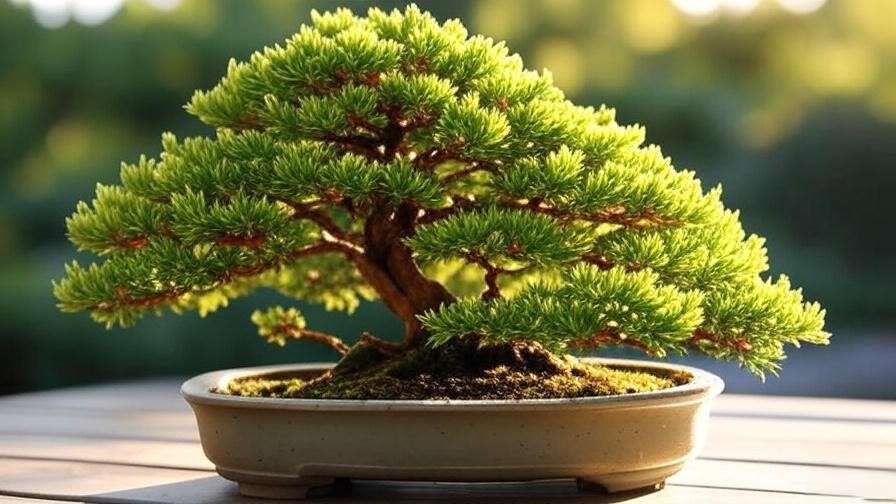
2.4 Temperature and Humidity 🌡️
Hinoki cypress bonsai thrives in temperatures between 50–75°F (10–24°C). It tolerates mild fluctuations but needs protection from extremes. In winter, if temperatures drop below 40°F (4°C), move outdoor bonsai to a sheltered area like a garage or cold frame. Indoors, maintain humidity levels around 50–60% using a humidity tray filled with pebbles and water or by misting the foliage daily. Dry indoor air, especially in heated homes, can stress the tree, so consider a small humidifier nearby. Monitor seasonal changes to keep your bonsai comfortable year-round.
3. Shaping and Pruning Your Hinoki Cypress Bonsai ✂️
3.1 Pruning Techniques 🌿
Pruning shapes both the health and beauty of your hinoki cypress bonsai. Maintenance pruning involves removing dead, damaged, or overcrowded branches to improve air circulation and light penetration. Perform this year-round as needed, using sharp bonsai shears for clean cuts. Styling pruning, done in spring or early fall, defines the tree’s form—whether you’re aiming for a classic upright or a dramatic cascade. Pinch back new growth with your fingers to encourage denser foliage. Always sterilize tools with rubbing alcohol to prevent disease spread.
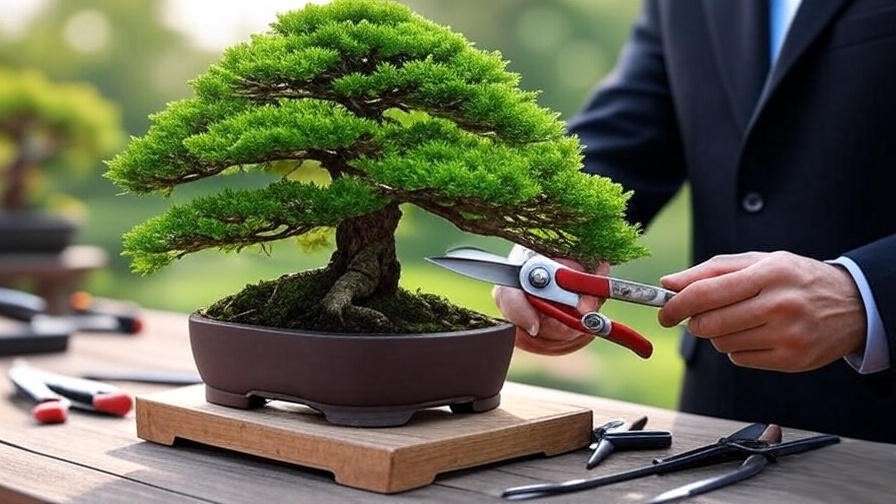
3.2 Wiring for Structure 🪢
Wiring allows you to sculpt your bonsai’s branches into desired shapes. Use aluminum wire for beginners, as it’s easier to handle than copper. Wrap the wire at a 45-degree angle around branches, starting from the trunk and working outward. Bend gently to avoid snapping, and check monthly to prevent the wire from cutting into the bark. Spring or fall is ideal for wiring, when branches are more pliable. After 2–3 months, remove the wire to let the branch set in its new position. Patience is key—rushing can damage your tree.

3.3 Styling Ideas for Beginners 🎨
The hinoki cypress bonsai tree is versatile, lending itself to various styles. The formal upright (Chokkan) features a straight trunk with symmetrical branches, evoking classic bonsai elegance. The slanting style (Shakan) tilts the trunk for a dynamic, wind-swept look. For a bold statement, try the windswept style (Fukinagashi), mimicking a tree shaped by coastal gales. Start with Chokkan for simplicity: prune lower branches to emphasize the trunk and wire upper branches to fan out evenly. Study photos of mature hinoki bonsai for inspiration, and don’t be afraid to experiment.
4. Fertilizing and Feeding Your Bonsai 🍽️
Fertilizing keeps your hinoki cypress bonsai vibrant and growing strong. Use a balanced liquid fertilizer (10-10-10) or a bonsai-specific organic blend, applied monthly from spring to early fall. Dilute to half-strength to avoid root burn, and water the soil before feeding to ensure even distribution. In winter, reduce feeding to every 6–8 weeks, as growth slows. Watch for signs of nutrient deficiency: yellowing needles may indicate nitrogen shortage, while weak growth could signal low potassium. If deficiencies persist, test the soil pH (ideal range: 5.5–6.5) and adjust with specialized bonsai fertilizers.
5. Common Pests and Diseases 🐛
5.1 Identifying Pests 🕷️
Even a well-cared-for hinoki cypress bonsai tree can attract pests. Common culprits include spider mites, scale insects, and aphids. Spider mites, tiny arachnids, leave fine webbing on needles and cause stippling or yellowing. Scale insects appear as small, waxy bumps on branches, secreting sticky honeydew. Aphids cluster on new growth, sucking sap and distorting leaves. Inspect your bonsai weekly under bright light, using a magnifying glass if needed. For organic control, spray neem oil diluted with water (1 tsp per quart) every 7–10 days. Alternatively, use insecticidal soap, ensuring thorough coverage of affected areas. Manual removal with a soft brush works for scales. Persistent infestations may require consultation with a local bonsai expert.
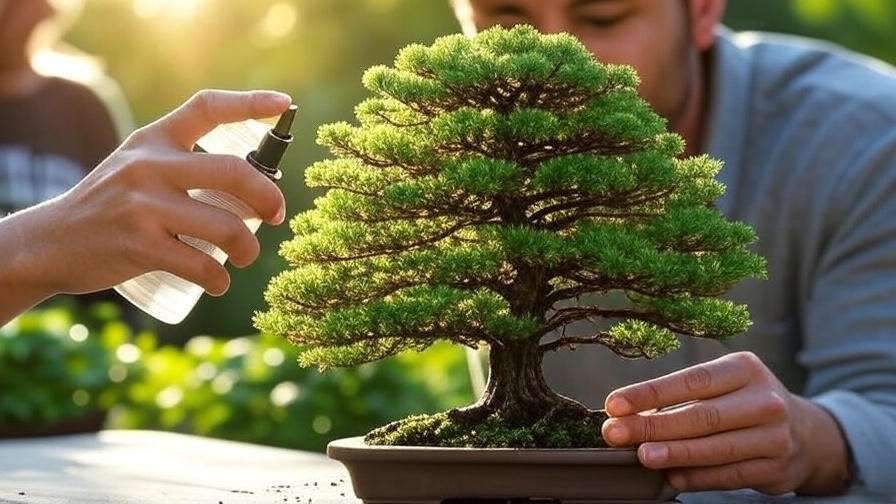
5.2 Preventing and Treating Diseases 🩺
Fungal diseases like root rot and needle blight can threaten your hinoki cypress bonsai. Root rot, often caused by overwatering, leads to mushy roots and wilting foliage. Prevent it by ensuring proper drainage and avoiding waterlogged soil. Needle blight, characterized by browning or dropping needles, thrives in humid, poorly ventilated conditions. Improve air circulation by spacing branches during pruning and keeping the bonsai in a breezy location. If disease strikes, remove affected areas with sterilized shears and apply a copper-based fungicide, following product instructions. Regular inspections and maintaining optimal care conditions are your best defense. As a bonsai enthusiast, I’ve seen early intervention save countless trees—don’t delay treatment.
6. Troubleshooting Common Hinoki Cypress Bonsai Problems 🔍
Caring for a hinoki cypress bonsai tree can sometimes feel like solving a puzzle. Here are common issues, their causes, and solutions, distilled from years of hands-on experience:
- Yellowing or Dropping Needles: Often due to overwatering, underwatering, or insufficient light. Check soil moisture—water only when the top half-inch feels dry. Ensure 4–6 hours of bright, indirect light daily. If the issue persists, test soil pH, as overly alkaline soil can block nutrient uptake.
- Stunted Growth: This may stem from compacted roots or nutrient deficiency. Repot if roots are circling the pot, and fertilize with a balanced 10-10-10 formula during the growing season. Poor light can also hinder growth, so adjust placement if needed.
- Weak or Drooping Branches: Over-pruning or improper wiring can weaken branches. Limit pruning to 20% of foliage at a time and check wired branches monthly to prevent constriction. Support weak branches with temporary stakes.
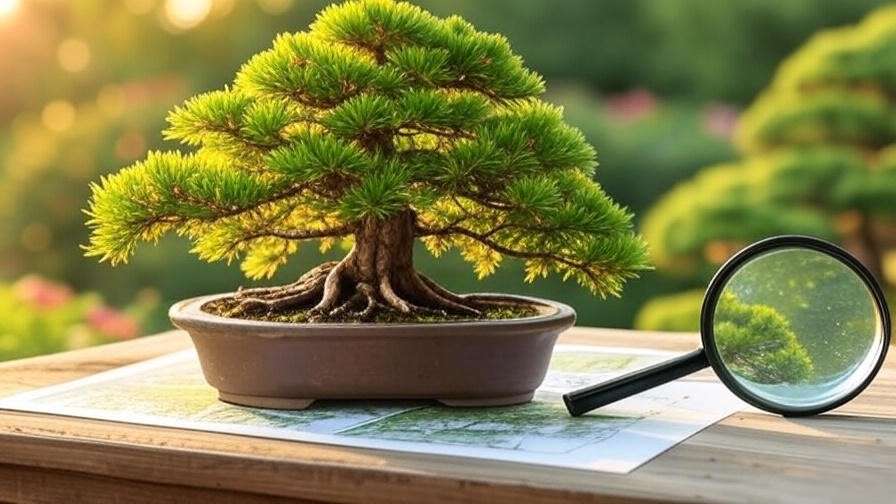
Quick-Reference Troubleshooting Chart:
| Symptom | Possible Cause | Solution |
|---|---|---|
| Yellowing needles | Overwatering, low light | Adjust watering, increase light exposure |
| Stunted growth | Nutrient deficiency, root-bound | Fertilize, repot every 2–3 years |
| Drooping branches | Over-pruning, wire damage | Prune conservatively, monitor wiring |
7. Advanced Tips for Long-Term Success 🌟
To elevate your hinoki cypress bonsai tree from beginner to masterpiece, focus on long-term development. To thicken the trunk, allow the tree to grow freely for a season before pruning back to encourage taper. For refined branching, pinch new shoots regularly to promote density. Create a seasonal care calendar: in spring, focus on repotting and wiring; in summer, prioritize watering and pest checks; in fall, prune lightly and fertilize; in winter, protect from frost and reduce feeding. Insights from professional bonsai growers emphasize patience—show-quality hinoki cypress bonsai can take 5–10 years to mature. Join a local bonsai club to learn advanced techniques like jin (deadwood) creation for added character.
8. FAQs About Hinoki Cypress Bonsai Care ❓
Q: How often should I water my hinoki cypress bonsai?
A: Water when the top half-inch of soil feels dry, typically every 1–3 days depending on climate and season. Ensure thorough drainage to prevent root rot.
Q: Can a hinoki cypress bonsai survive indoors year-round?
A: Yes, with proper care—bright indirect light, 50–60% humidity, and consistent temperatures (50–75°F). Supplement with grow lights in low-light conditions.
Q: What’s the best beginner-friendly bonsai style for a hinoki cypress?
A: The formal upright (Chokkan) style is ideal for beginners due to its simple, symmetrical structure. Start with light pruning and minimal wiring.
Q: How do I know if my bonsai is healthy?
A: Look for vibrant green needles, steady growth, and firm roots. Yellowing, wilting, or sparse foliage may indicate care issues—refer to the troubleshooting section.
These answers draw from my experience and consultations with bonsai masters, ensuring practical, reliable advice.
9. Conclusion: Your Journey with Hinoki Cypress Bonsai 🌲
Growing a hinoki cypress bonsai tree is a journey of patience, creativity, and connection with nature. By mastering light, watering, pruning, and pest management, you’ll nurture a thriving miniature masterpiece that brings joy for years. This guide, built on expert insights and hands-on experience, equips you with the tools to succeed, whether you’re a novice or seasoned grower. Share your bonsai progress in the comments below, ask questions, or explore related articles on juniper bonsai or general plant care. For ongoing support, consider joining a local bonsai club or following online communities dedicated to this timeless art. Happy growing! 😊

